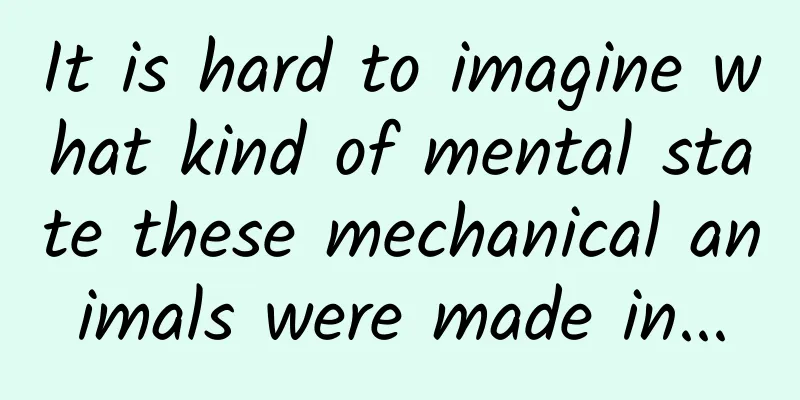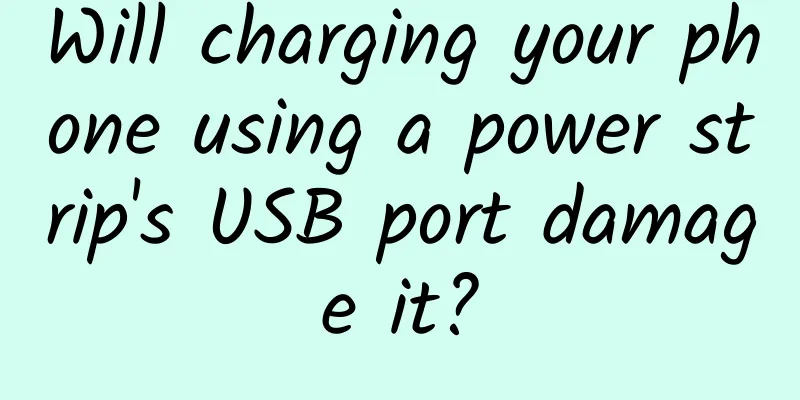How can something the size of a fist "support" an entire life?

|
Author: Chen Bingwei, deputy chief physician, Tianjin First Central Hospital Reviewer: Xia Dasheng, Chief Physician, Tianjin First Central Hospital "Life is priceless", each of us must cherish and respect life. Have you ever asked yourself this question: "Why can I live in this world?" In fact, behind every "lively" life, there is a very important organ "relying on" - the heart. Figure 1 Copyright image, no permission to reprint The heart is located in the middle of the chest cavity, slightly to the left. The heart is not big, about the size of a person's fist, but it can "support" the entire life, because the heart is the most important organ to maintain human survival. Once the heart stops beating, it often means the end of life. Figure 2 Copyright image, no permission to reprint As one of the most delicate organs in the human body, the heart beats 80,000 to 100,000 times a day to ensure the supply of energy and oxygen required by human organs and tissues. Do you know how each heart beats? Human survival is inseparable from "food, clothing, housing and transportation", and "housing" just meets the safety needs of each of us. "Housing" can protect us from wind and rain, can shelter our tired bodies, is a place for us to recuperate, and is a "gas station" for us to revitalize our spirits... and the heart is like a house, which can make the organs of our whole body "refreshed". From the perspective of anatomical structure, the heart is just like a house. The heart is a hollow structure similar to a balloon formed by cardiac tissue. This structure has two layers, the upper layer is called the atrium, and the lower layer is called the ventricle. The upper and lower layers each have two rooms, the upper layer is the left atrium and the right atrium, and the lower layer is the left ventricle and the right ventricle. Figure 3 Copyright image, no permission to reprint A complete house must have walls, doors and windows, electrical circuits, water pipes, etc. The "walls" of the heart are the atrial walls and ventricular walls, the "doors and windows" are the heart valves, the "electrical circuits" are the heart's conduction system, and the "water pipes" are the coronary arteries we often mention. Figure 4 Copyright image, no permission to reprint Let’s first talk about the “circuit” system of the heart. A normal human heart contracts regularly, and when at rest, it beats about 50 to 100 times per minute. To maintain such a regular "work", the heart needs a sophisticated electrical signal transmission system. Simply put, the function of the heart is to draw blood in and pump it out, just like a "pump". The main function of the heart to pump blood is in the lower layer, that is, it is completed by the left ventricle and the right ventricle, and the upper atrium plays an auxiliary role. Don't underestimate the "atrium". Although it is not the main organ for pumping blood, it is an important structure to maintain the number of times the heart beats per minute. For the entire "pump" to work properly, the cooperation of the two "departments" of the atrium and ventricle is required. At this time, "good communication" between the atrium and the ventricle is particularly important, and the "tool" for communication is precisely the electrical signal conduction system. The structure that controls how many times the heart beats per minute is called the "sinoatrial node", which can also be seen as the "headquarters" of the entire heart. It is located in the upper right corner of the right atrium. In order for the signal from the "headquarters" to be quickly transmitted to the entire heart, it must first pass through the three "wires" in the atrium to the junction of the upper and lower layers, and then continue to pass down to the ventricle through the atrioventricular node at this junction. There are two "wires" in the ventricle that can quickly transmit the received signal throughout the ventricle. With the electrical signal, the entire heart can contract regularly and neatly. Figure 5 Copyright image, no permission to reprint It should be noted that under normal circumstances, only the atrioventricular node between the upper and lower layers (that is, the atria and ventricles) can conduct electricity, and the rest of the junction between the upper and lower layers are insulated and non-conductive. To give another analogy, the heart is like a large-scale army composed of many soldiers, and the "sinoatrial node" is the commander who shouts the slogans to the entire army. The commander shouts "1, 2..." one by one, and the entire army will move forward in unison. The cardiac conduction system is like a messenger in the army, which can transmit the slogans to the entire heart at the fastest speed; the rest of the soldiers are combat troops, obeying the commander's slogans and moving in unison. This kind of heart rhythm is called "sinus rhythm", that is, the heart rhythm dominated by the "sinoatrial node", which is a normal heart rhythm. Some outpatients will ask doctors why the electrocardiogram report says "sinus rhythm". In fact, this is a normal heart rhythm. Now that we understand the heart's circuit system, let's take a look at its other parts. The heart is made of muscle, which is essentially the same tissue as the muscles in our legs and arms. The heart beats 80,000 to 100,000 times a day, and the heart muscles contract 80,000 to 100,000 times repeatedly. The muscles of the limbs need nutrition, and the heart muscles also need nutrition. The nutrition of the limb muscles needs to be transported by the blood vessels distributed in the limbs, while the nutrition needed by the heart muscles is transported by the coronary arteries. If the coronary arteries are narrowed or even blocked, it will cause coronary heart disease. Figure 6 Copyrighted images are not authorized for reproduction If there is a problem with the “water pipe”, you will get coronary heart disease, so what will happen if there is a problem with the “wall”? The "walls" of the heart - the walls of the atria and ventricles - form the most basic structure of the heart. If there is a problem with the "walls" of the heart, cardiomyopathy will occur. If the ventricular walls become thinner, the heart will contract weakly, leading to heart failure, a condition called dilated cardiomyopathy; if the ventricular walls become thicker, it will occupy the "usable area" of the heart, making the heart chamber further smaller, thus causing a series of problems, which is called hypertrophic cardiomyopathy. There are two very interesting "walls", namely the "atrial septum" that separates the left atrium and the right atrium, and the "ventricular septum" that separates the left ventricle and the right ventricle. These two "walls" are normally intact. If the walls are not completely closed due to congenital maldevelopment, leaving holes, "atrial septal defect" and "ventricular septal defect" will appear respectively. As a result, part of the blood flow will take a "backtrack", and the heart has to do extra work, which increases the burden on the heart; in severe cases, part of the blood flow will take a "shortcut", so that the oxygen-deficient venous blood is directly sent out of the heart to the whole body without being supplemented with oxygen by the lungs, causing hypoxia symptoms. Now that we understand “circuits,” “walls,” and “water pipes,” let’s take a look at “doors and windows.” The blood in the heart vessels flows unidirectionally, that is, it can only flow in one direction. To ensure the unidirectional flow of blood, the "doors and windows" of the heart play an important role. These "doors and windows" are like "one-way valves" in a machine, which can only be opened in one direction. When the blood tries to flow in the opposite direction, the valve will close. These "doors and windows" are the valves of the heart. The "bang bang" sound we hear when the heart beats is the sound made when these "doors and windows" open and close. The heart valves include the tricuspid valve that separates the right atrium and the right ventricle, the mitral valve that separates the left atrium and the left ventricle, the pulmonary valve that ensures that the blood in the right ventricle can only go out but not in, and the aortic valve that ensures that the blood in the left ventricle can only go out but not in. If all these doors and windows are difficult to "open", it means that the valve is narrow, and the heart needs to spend more effort to push the doors and windows open; if they are not "closed" tightly, valve regurgitation will occur, and part of the blood flow will flow "uselessly" back and forth inside and outside the valve, increasing the workload of the heart. These conditions will cause myocardial hypertrophy and even expansion over time, and eventually lead to heart failure. It should be noted that most of the "mild" valvular regurgitation found in clinical practice is normal and there is no need to worry. Life is endless, originating from the beating of the heart; vibrant life depends on a beating heart. Take care of your heart and cherish your life, because the heart is the most important thing in the life of each of us! |
>>: Want to ride a dragon like Dragon Queen? It's possible!
Recommend
Is Skoda considering withdrawing from China? Why do we, who “understand Volkswagen”, no longer buy Skoda?
Skoda Auto, a Czech brand that once dominated the...
Li Shufu, the "disruptor": The Internet cannot subvert the automotive industry
"In the future, the automotive industry will...
Five-minute technical talk | A brief discussion on Android application startup optimization methods
The difficulty of startup speed optimization is c...
The first major update of the App Store Review Guidelines in 2017! Modified/newly added content accounts for 23%!
Recently, Apple made the first major update to th...
Why are used car e-commerce companies so keen on "advertising"?
Starting from a few days ago, you can already see...
How much does it cost to enter Baidu Procurement for one year?
The past 10 years have been the fastest-growing d...
Why are condoms and chewing gum always placed together in supermarkets? The marketing trick behind it is actually...
Shopping in the supermarket is an essential part ...
Why can a can that can’t be opened be opened by tapping the bottom?
Do you like to eat this kind of canned fruit in g...
An advertising optimization “magic tool” that increases delivery results 10 times!
The job of an information flow advertising optimi...
How to attract traffic on Weibo? Precise traffic generation techniques on Weibo!
In this era, many people are scrambling to gather...
Camping is great, but safety is more important! Here are some tips for camping during the pandemic
Some netizens said: There is a tent set up on eve...
Distorted comment: A slap, a job, a huge sum of 22 million, and a weekend are nothing to me!
❖ I often ask myself recently: How forgetful are ...
19-year-old boy suffers from Alzheimer's disease! Always forgetful? 60-second self-test →
Recently, a paper written by Jia Jianping's t...
CCTV "Lecture Room" program series video 179 episodes 2641 episodes Mandarin Chinese subtitles collection Baidu cloud download
"Lecture Room" is a lecture-style progr...
Where do Pinduoduo’s new users come from?
There is perhaps only one month left before Pindu...









